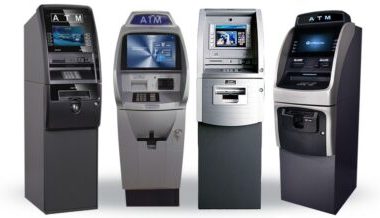You might be categorized as a micro business if your company operates on a very small scale. When you fall under the smaller category of a small business, you employ very few people and generate very little revenue. Even though the distinction in classification might not seem particularly significant, there are a few considerations to make if you do run a micro business.
In this article, we look at what a micro business and small business are, and what their differences are.
What Is a Micro Business?
Micro businesses are organizations that successfully commercialize a talent or product concept while being generally smaller than small businesses.
Additionally, a micro business is a small enterprise that typically has only a few employees and generates a low level of revenue, usually less than $250,000 per year. Examples of micro-businesses include freelancers, independent consultants, small retail shops, home-based businesses, and small-scale service providers. Note that despite their small size, micro-businesses can be an important part of the economy, providing employment opportunities and contributing to local communities.
What Qualifies as a Micro Business?
Generally speaking, a micro business is a very small company with few employees and little revenue. Depending on the sector and region, different factors may determine what qualifies as a micro business, but the following general guidelines should help:
#1. Employee count: A microbusiness typically employs fewer than 10 people. Even though some explanations may permit up to 25 employees, micro businesses are typically very tiny enterprises.
#2. Annual revenue: A micro business typically brings in less than $500,000 annually. Again, this number may differ depending on the industry and region, but in general, micro businesses are thought to be small companies with low revenue.
#3. Ownership structure: Micro businesses are frequently run and owned by one or two individuals, and they can be organized as sole proprietorships, partnerships, or limited liability companies (LLCs).
#4. Operational size: Micro businesses typically have a small workforce and target regional or specialized markets. They might run their business out of a home office or a small storefront, and they might offer highly specialized goods or services.
In general, a micro business is a very tiny business that typically employs few people, is owner-operated and brings in little money.
What Is a Small Business?
Small businesses are corporations, partnerships, or sole proprietorships with fewer employees than larger companies (and typically lower revenue). The precise legal definition of a small business can vary from place to place and is frequently based on the business’s industry.
Additionally, the U.S. The Small Business Administration uses size standards to categorize businesses as “small” to decide their eligibility for government grant programs. According to industry-specific standards, a company can have up to 1,500 employees and still be categorized as small.
Furthermore, according to the U.S. Census Bureau, there will be 33 million small businesses operating in the country by 2024, making up 99% of all businesses.
What Are the 5 Classifications of Small Business?
According to the number of employees and annual revenue, small businesses can be categorized in several different ways depending on the industry and location. The following are five typical classifications:
#1. Microenterprise:
The smallest category of small businesses, known as a microenterprise, is one with no more than five workers and an annual income of less than $250,000.
#2. Partnership:
A partnership is a company that is owned and run by two or more people. Depending on the location and industry, it can vary in size from a microenterprise to a small business with close to 500 employees.
#3. Sole proprietorship:
One individual owns and runs this company. All debts and liabilities incurred by the sole proprietorship are his or her personal responsibility.
#4. Limited Liability Company
This kind of corporate structure combines elements of partnerships and corporations. It provides pass-through taxation and restricts owners’ liability.
#5. Corporation:
An independent legal entity that is owned by shareholders is a corporation. Although this type of business structure imposes double taxation, it offers its owners limited liability.
What Qualifies As A Small Business?
According to the SBA, a small business employs up to 1,500 people and has annual revenue caps of up to $40 million. Furthermore, when deciding whether to designate a business as a small business, the SBA also takes into account factors such as:
- Location. Is the company’s headquarters in America? Does it primarily conduct business here?
- Motivation for gain. Does it function as a for-profit company or a non-profit group?
- Ownership arrangement. Does it have a separate owner and operator?
- Ownership identity. Compared to the industry at large, do minorities own the company? (For SBA purposes, female ownership would be regarded as a “minority” if, for instance, men dominate a given industry.)
What Are Micro and Small Business Examples?
Examples of Micro business:
Micro businesses typically have few employees and little revenue. They are very small companies. Here are a few instances of small businesses:
#1. Freelance writer: A self-employed writer and contracts with clients.
#2. Craft store: Small business proprietor who operates an Etsy shop and sells handmade or vintage goods online.
#3. Personal chef: A self-employed chef who serves clients in their homes is referred to as a personal chef.
#4. Virtual assistant: A virtual assistant is an independent administrative support professional who works remotely for clients.
#5. Tutor: A teacher who works for themselves and offers private or group tutoring.
#6. Lawn service: A small business that offers lawn mowing, trimming, and other landscaping services is referred to as a lawn care service.
#7. Home-based bakery: A small business that operates out of the owner’s home and sells baked goods.
#8. House cleaning service: A small business that offers house and apartment cleaning services.
#9. Pet-sitting services: A small business offering pet-sitting services that provide pet-sitting and dog-walking services.
#10. Social media consultant: A self-employed consultant who assists businesses with their social media marketing strategies.
Examples of Small Business
Here are some examples of small businesses:
#1. Coffee shop: A small coffee shop that sells pastries, snacks, and a variety of coffee and tea drinks.
#2. Boutique clothing store: A tiny shop that offers distinctive and fashionable clothing as well as accessories.
#3. Home cleaning service: A company that provides house and apartment cleaning services.
#4. Personal training: A company that provides clients with fitness instruction and coaching.
#5. Graphic design agency: A small company that provides customers with graphic design services.
#6. Food truck: A roadside eatery that operates out of a trailer or truck.
#7. Hair salon: This is an establishment that provides styling, coloring, and other services for hair.
#8. Pet grooming: A company that provides services for grooming dogs and cats.
#9. Craft shop: A small shop that sells materials and handmade crafts is a craft store.
#10. Landscaper: A company that provides landscaping, gardening, and lawn care services.
What Is the Difference Between Micro, Small, and Medium Businesses?
The number of employees and total revenue is typically used to distinguish between micro, small, and medium businesses. The following are brief descriptions of each:
#1. Micro Business: Generally speaking, a micro business employs fewer than ten people and generates less than $500,000.
#2. Small Business: Generally speaking, a small business employs fewer than 100 people and generates less than $5 million in annual revenue.
#3. Medium Business: Generally speaking, a medium business employs 100 to 500 people and generates $5 million to $50 million in annual revenue.
Note that these definitions can vary depending on the industry and location, and different countries may have different criteria for defining micro, small, and medium businesses. However, these general definitions provide a basic understanding of the size and scale of each type of business.
How Big Is a Small Business?
A small business’s size may differ depending on its sector, location, and other elements. A small business is generally understood to be an organization with fewer than 500 employees and lower revenue than larger companies.
However, other factors can be used to define a small business, including the number of shareholders, the amount of money invested, or the market that it serves. For instance, the Small Business Administration (SBA) in the United States establishes different size standards for various industries based on the number of employees and annual revenue.
Generally speaking, a company is considered small if it has fewer than 100 employees, and a micro-business if it has fewer than 20 employees. However, this may differ based on the location and industry. For instance, a small company in a remote community might employ fewer people than a similar company in an urban area.
Therefore, it’s important to remember that small businesses contribute significantly to economic activity and create a sizable portion of new jobs.
What Does the IRS Consider a Small Business?
The Internal Revenue Service (IRS) has standards for determining the size of a business for tax purposes, but it does not have a specific definition of a small business. The IRS states that a company’s annual gross receipts, which include all earnings from sales and other sources, are used to calculate its size.
The IRS defines a small business as one that had average annual gross receipts of $26 million or less over the previous three tax years. The majority of business structures, including sole proprietorships, partnerships, and corporations, fall under this definition.
Note that IRS guidelines are used for tax purposes only and may not be the same as those of other organizations or government agencies.
How Many Businesses Are Considered Small?
According to the most recent data, there are 33 million small businesses in the US or 99% of all businesses in the country. A small business employs fewer than 500 people, according to the Small Business Administration (SBA).
What is a Micro Business Capital?
Micro business capital is the funds or financing available to support the growth and development of micro businesses. It can come from a variety of sources, such as microloans, grants, crowdfunding, angel investors, and venture capital. Note that micro-business capital is an important resource for small businesses, helping them access the funds they need to grow and succeed.
Micro vs Small vs Medium Business
As explained above, “micro, small, and medium businesses are classifications used to describe the size and scale of businesses. Micro businesses are small operations with fewer than 10 employees and annual revenue of less than $500,000. Small businesses are larger than micro businesses with fewer than 100 employees and an annual revenue of less than $5 million. Lastly, medium businesses are larger than small businesses, with between 100 and 500 employees and annual revenue of between $5 million and $50 million.
What is the difference between Micro Business vs Small Business Types?
Micro businesses and small businesses are both types of small-scale enterprises, but they differ in size, revenue, and focus. Micro businesses are the smallest type, with fewer than 10 employees and an annual revenue of less than $500,000. They are often owner-operated and may serve a local or niche market. Small businesses are larger, with fewer than 100 employees and an annual revenue of less than $5 million. They may have a more established customer base and be able to access traditional forms of financing.
Overall, the size and revenue of micro businesses and small businesses are the main distinctions. Small businesses come in a variety of sizes, with micro businesses being the smallest. Small businesses tend to operate a bit larger, with a greater number of resources and room for expansion.
What is the difference between Micro Business and Small Business Loans?
Micro business loans are smaller than small business loans and designed specifically for micro businesses. They range from a few thousand dollars to up to $50,000 and may have lower interest rates and more flexible repayment terms. Meanwhile, small business loans are designed for small businesses with more established operations and higher revenue. They may have higher interest rates and strict repayment terms, and they may require a more detailed business plan and financial history.
Overall, the loan size, interest rates, repayment terms, and prerequisites for obtaining the loan are the main distinctions between micro business loans and small business loans. Small business loans are intended for larger, more established businesses and may have more stringent requirements. Note that micro business loans are intended for the smallest type of small business and may be simpler to obtain.
SMALL BUSINESS IDEAS IN CALIFORNIA: Top 21+ Profitable Options
HOW TO GET A SMALL-BUSINESS LOAN IN FLORIDA: Explained!
HOW TO GROW YOUR BUSINESS: The Ultimate Guide
FRANCHISE FEE: What It Is, Why You Pay Them & Guide






